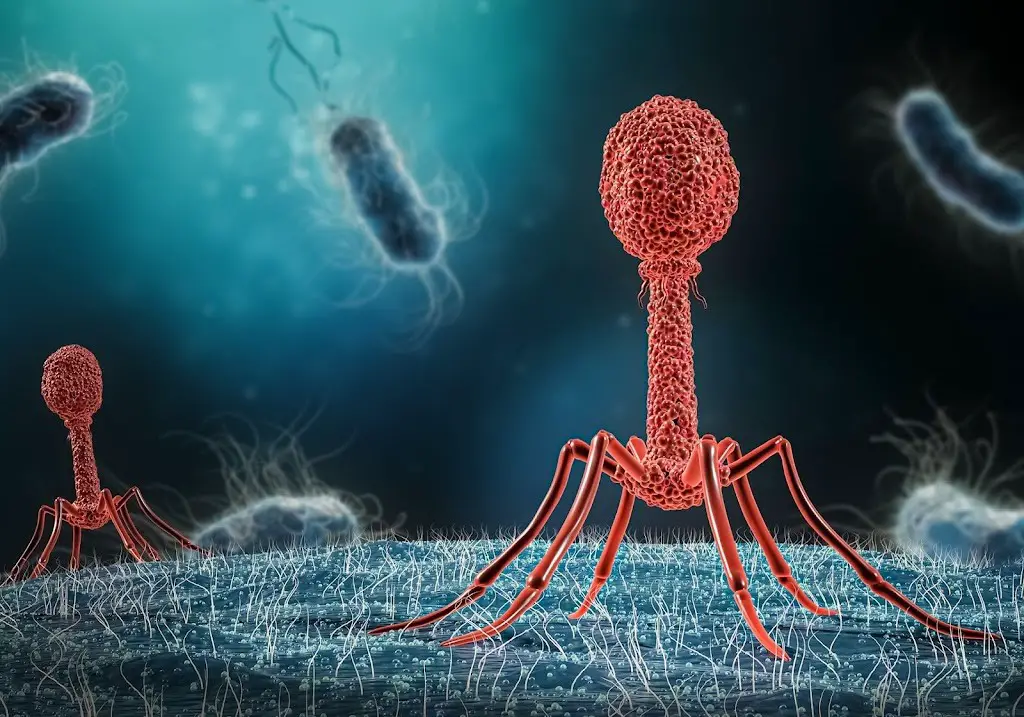Prepare to be amazed by the groundbreaking discovery made by researchers at the University of Warwick—a breakthrough that has the potential to revolutionize the prevention of bacterial culture viral contamination (attack). This remarkable finding holds immense promise, not only for reducing disruptions and costs across various industries but also for streamlining research processes to new levels of efficiency.
In the realm of bacteria, protection is paramount. However, we're not referring to the harmful and malevolent kind. Instead, our focus lies on the crucial preservation of beneficial bacteria with immense biotechnological potential.
Bacteria, those tiny but mighty organisms, play an indispensable role in biological and biomedical research. They serve as the invaluable "factories" that produce an array of materials, medicines, and chemicals, including our beloved yogurt and many other dairy products. Furthermore, in the realm of emerging industrial biotechnologies, bacteria are the driving force behind sustainable development, offering alternatives to traditional industrial methods. However, just like humans, bacteria are susceptible to infections.
Bacteriophages—viruses specifically targeting bacteria—a formidable threat capable of causing widespread contamination. Laboratories and microbial factories are locked in a constant battle against these stealthy phage infections, resulting in significant downtime for research and industrial operations. The subsequent costs and rigorous disinfection protocols needed to address the issue only compound the problem, posing a formidable challenge for scientists and industry professionals alike.
But fear not! In a groundbreaking study published in the prestigious Journal of the American Chemical Society, a team of researchers from the University of Warwick's esteemed Chemistry, Medical School, and Life Sciences departments, in collaboration with the innovative bioscience company Cytiva Ltd, has unveiled a simple yet transformative solution to prevent phage infections. By introducing a novel biomaterial to bacteria, they have successfully hindered the insidious spread of these infectious invaders. The potential of this breakthrough is monumental—it has the power to advance next-generation industrial biotechnologies while eliminating a significant barrier to fundamental research.
Let's delve into the details of this extraordinary finding. The researchers discovered that poly(acrylic acid), a readily available and mass-produced additive, serves as the ultimate weapon against the phage-induced killing of bacterial hosts and prevents phage replication. Not only does this remarkable polymer exhibit superior effectiveness when compared to other alternatives like poly(methacrylic acid), but the study also found that the presence of the polymer does not compromise the induction of recombinant protein expression. This indicates that the miraculous additive operates in a virustatic manner, preventing the viruses from proliferating rather than destroying them outright.
Imagine the possibilities—this simple, low-cost, and easily implemented solution offers a practical and scalable approach to reduce phage contamination. The implications are astounding, as it provides a lifeline to industries heavily reliant on bioprocessing and biotechnology. Chemical production, the development of life-saving therapies, the manufacturing of biologics, and even food production can benefit from this transformative discovery. Shut-downs and extensive decontamination procedures using generic disinfectants may soon become a thing of the past.
The collaborative efforts between the University of Warwick and Cytiva have been instrumental in unlocking this remarkable breakthrough. Their partnership has proven invaluable in harnessing the expertise of multiple disciplines, ensuring a comprehensive and holistic approach to tackling the challenges posed by phage contamination. This momentous discovery marks a new era in the fight against bacterial infections and sets the stage for unparalleled advancements in industrial biotechnology.
This groundbreaking research was made possible through generous funding from the BBSRC, the Royal Society, and Cytiva—an investment that highlights the immense significance and potential impact of this transformative discovery. The future looks brighter as we stand on the precipice of a new chapter in bacterial preparations—one where disruptions and costs are minimized, research processes are streamlined, and industries can thrive without the constant threat of phage contamination.




